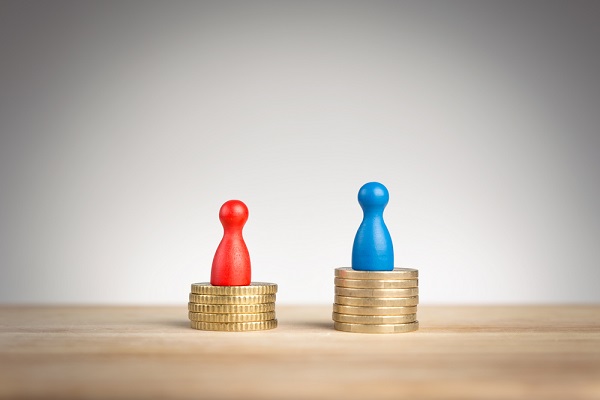 Highly educated women suffer a larger pay gap than do women with less; those with MBAs only take home 74 cents compared to a male MBA's dollar. (Photo: Shutterstock)
Highly educated women suffer a larger pay gap than do women with less; those with MBAs only take home 74 cents compared to a male MBA's dollar. (Photo: Shutterstock)
It's nos secret that women's pay lags behind men's to a substantial degree. Now a PayScale, Inc. study shows that while there are plenty of reasons that women's pay is lower than men's, a major factor is what it terms an “opportunity gap:” that women with comparable skills, experience and education are not advancing in their careers at the same rate as men.
The State of the Gender Pay Gap in 2019 reports that just 3 percent of women become executives, compared to 8 percent of men; that means that women are restrained from achieving higher earnings by being stuck in lower-level, lower-paid, individual-contributor positions.
Related: Young women aren't closing the Great American gender-pay gap
“The ongoing conversation about gender pay is really a call to action for employers to provide equal access to the best-paying positions in their organizations,” says Lydia Frank, vice president of PayScale,
“Our research shows the gender pay gap is multifaceted with many different factors contributing to pay inequity,” Frank added, “As a result, every woman experiences the gender pay gap differently depending on her unique abilities and identities. Working toward a deeper understanding of these elements and developing a process for mitigating biases that exist are the best ways for employers to establish equitable earning potential at their organization. That means being proactive, looking at data regularly and being holistic in your approach.”
Among the report's findings are the fact that in 2019, women's earnings amount to 79 cents for every male-earned dollar—a single penny of improvement from 2018. This figure represents the uncontrolled pay gap, which measures median salary for all men and women regardless of job type, seniority, location, industry, years of experience and other factors.
The controlled pay gap, on the other hand, indicates that a woman earns 98 cents for every dollar earned by a man—but this does not represent the whole picture, the report says.
Women of color—black, Hispanic and Alaska Native women—are even worse off, earning just 74 cents to the dollar for white men. It actually gets worse the higher up the corporate ladder they go, with black women executives earning just 63 cents for every male executive-earned dollar. If controlled for similar qualifications, that changes to 97 cents for every dollar earned by a white male.
Interestingly, Asian women are better off, earning two percent more than white men with the same compensable factors.
Two really sad things: highly educated women suffer a larger pay gap than do women with less; those with MBAs only take home 74 cents compared to a male MBA's dollar. And older women are also on the wrong side of the wage gap, with younger women not having as much of a disparity. Those aged 45 and older only make 70 cents on the dollar compared to men of the same age.
Read more:
- How much does discrimination explain the gender pay gap?
- Women in blue-collar areas face the biggest pay gap
- Equal Pay Day highlights ground lost for women
© 2025 ALM Global, LLC, All Rights Reserved. Request academic re-use from www.copyright.com. All other uses, submit a request to [email protected]. For more information visit Asset & Logo Licensing.








